The MSI MPG A1000G PCIE5 PSU Review: Balance of Power
by E. Fylladitakis on February 2, 2023 1:00 PM EST- Posted in
- Cases/Cooling/PSUs
- PSUs
- MSI
- 80Plus Gold
- ATX v3.0
- 12VHPWR
Hot Test Results (~45°C Ambient)
The MSI MPG A1000G PCIE resists high ambient temperatures well enough for an 80Plus Gold certified unit, with an average efficiency degradation of 0.65% across the nominal load range. However, the degradation while the unit is very heavily loaded is high, at over 1.5%, suggesting very high thermal stress.
Due to the aggressive cooling profile, the internal temperatures of the MSI MPG A1000G PCIE are quite low for a unit with that kind of power output. The thermal losses of this PSU at maximum load are over 125 Watts, with the fan giving its all by the time the load is at 80% of the unit’s capacity, and even then the component temperatures are of the lowest we have seen in products of similar class and power output. The irregular observation here is that there is a sharp efficiency drop at maximum load while the PSU’s primary components are not too hot. We ruled out the common culprit which is undersized components, as the components used in the MPG A1000G are more than capable of delivering the required currents, as well as the possibility of a poorly attached part to its heatsink that would cause a massive hot spot. That implies that the MPG A1000G PCIE simply is based on a platform strongly optimized for low-end performance, or that the platform was not originally meant to be used for 1+ kW units.
As we mentioned above, the internal temperatures of the MSI MPG A1000G PCIE are quite low for a product of its class and power output. The culprit behind this is the aggressive cooling profile and the large Hong Hua 135 mm fan. With the PSU operating inside our hotbox, the unit is relatively quiet while the load is very low, with the fan’s speed increasing almost linearly alongside with the load if the latter is greater than 200 Watts. The controller had the fan running at maximum speed by the time the load was 800 Watts, making the MPG A1000G PCIE5 annoyingly loud. Typical PCs (at least not those available today) will not continuously draw that kind of power from the PSU but it can become a problem under certain usage scenarios.


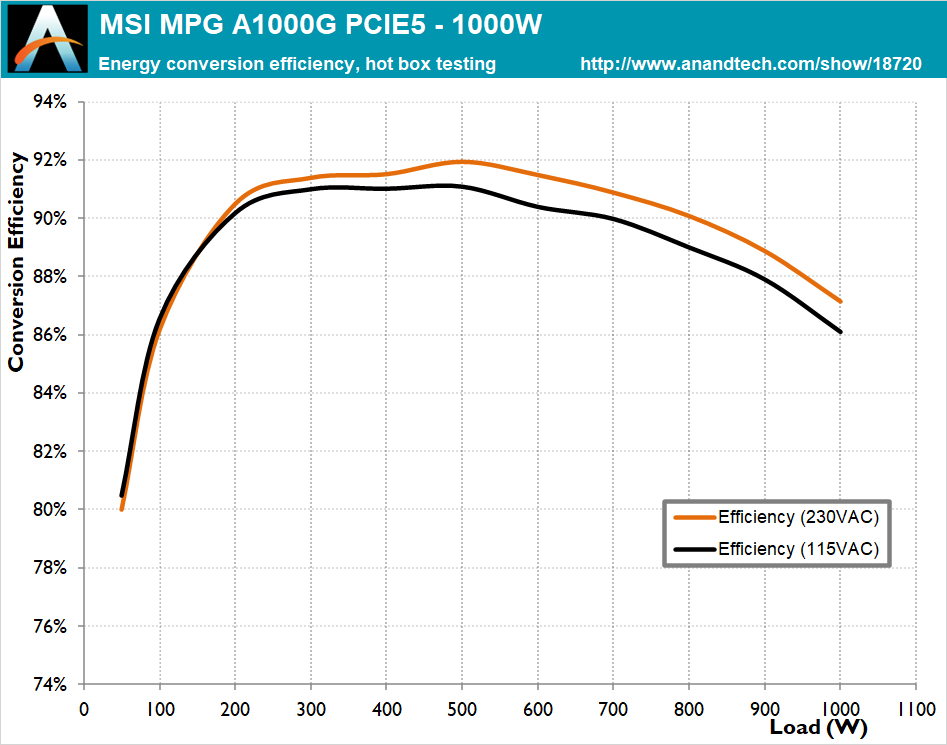
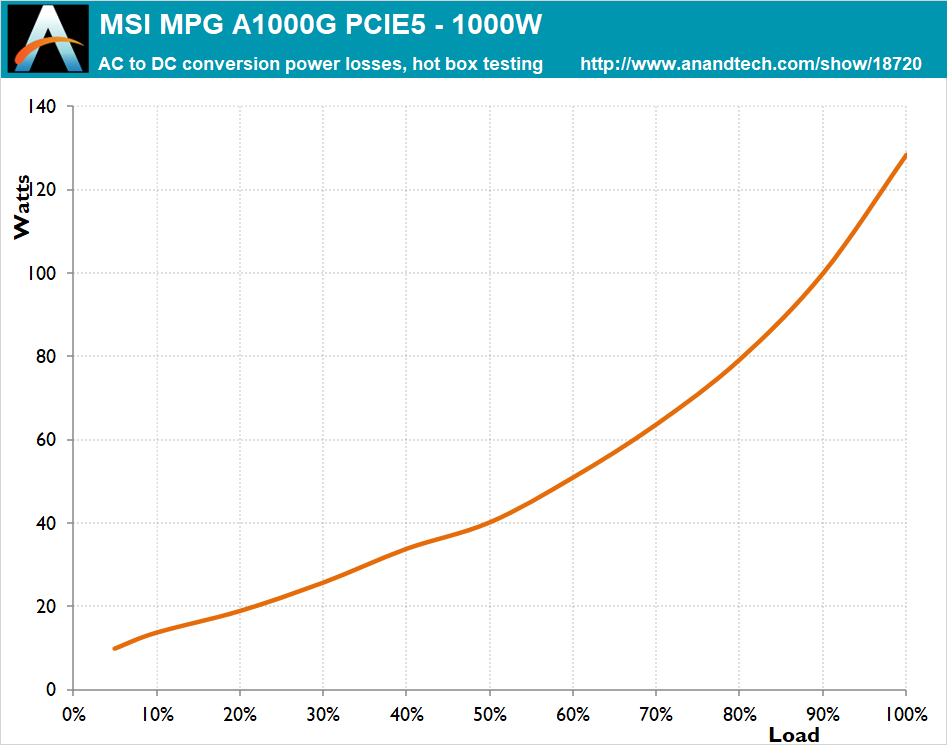
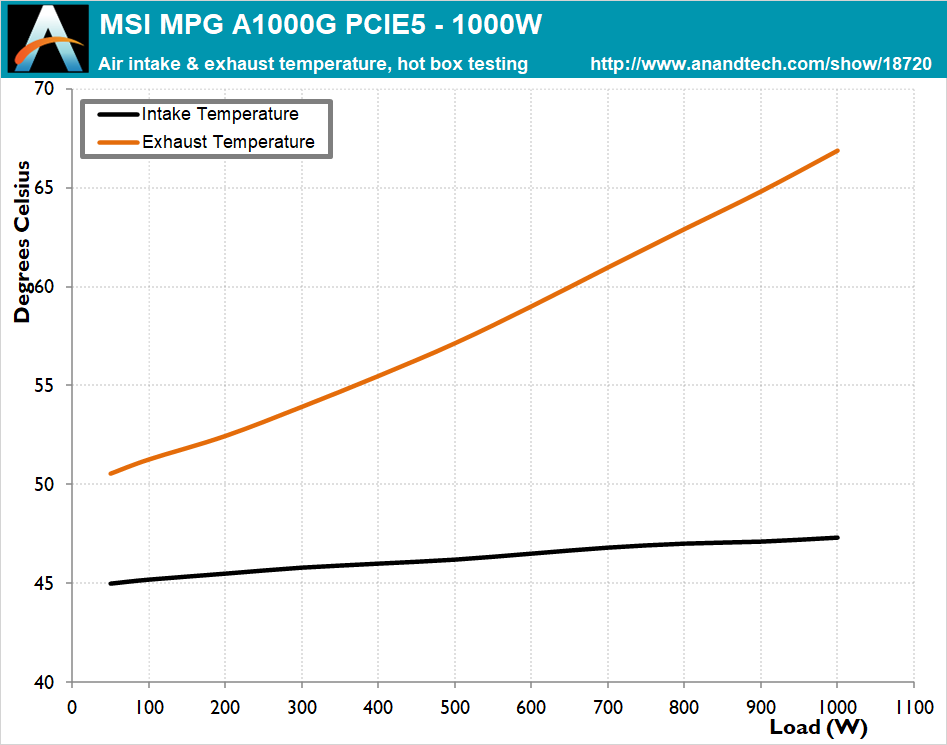
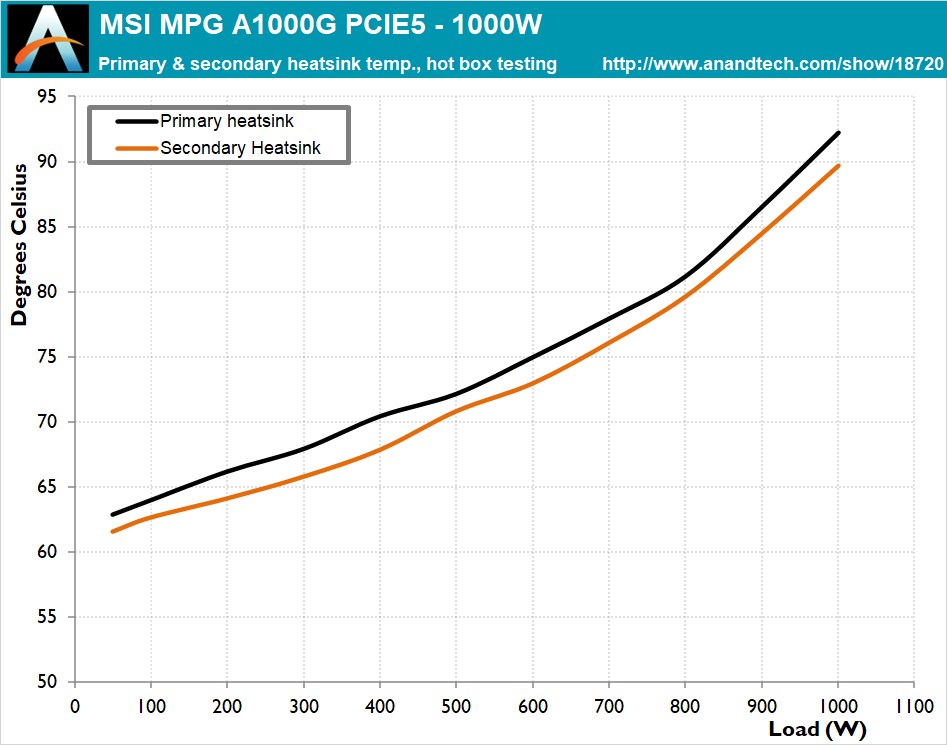
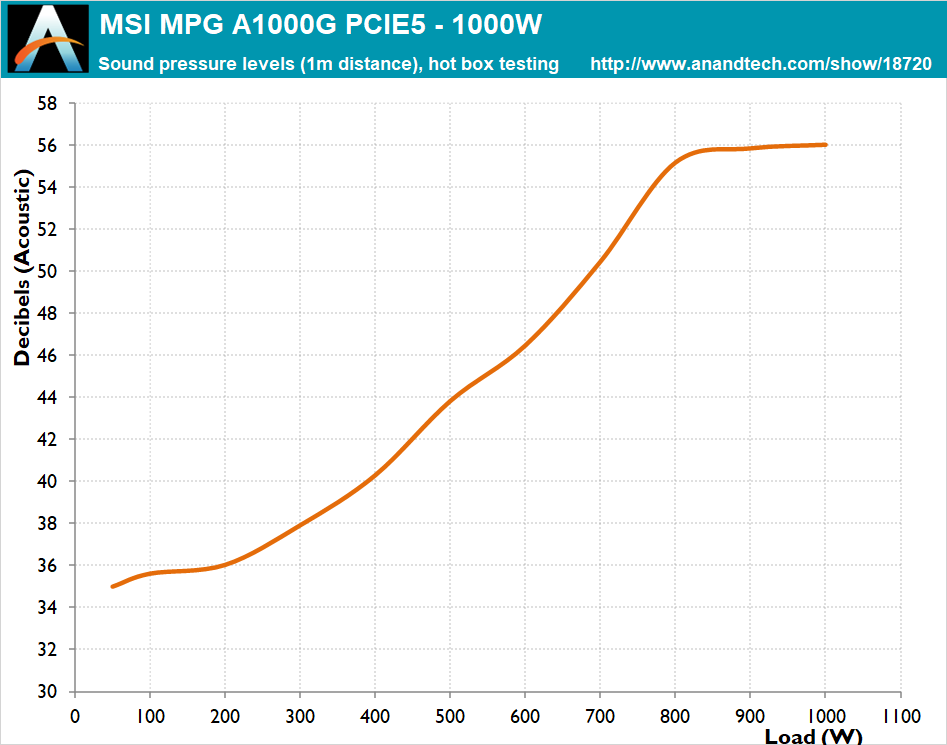








15 Comments
View All Comments
Tom Sunday - Sunday, February 5, 2023 - link
I am about to purchase another PSU. As such it has to be at least 1300W and have full 12VHPWR support. Been seriously looking at the Seasonic PRIME-TX-1300 which comes with (2) 12VHPWR cables. Its unfortunately not totally 3.0 compliant and $460 MSRP is not easy to swallow. I also like the Super Flower Leadex Titanium 1000W 80+Titanium product (they manufacture for EVGA) for its superb quality, but no 12VHPWR news or introductions as of yet!Oxford Guy - Wednesday, March 1, 2023 - link
Watch the noise levels. Seasonic apparently isn't known for making much effort to design quite high-wattage PSUs. Even BeQuiet allegedly has had issues with noisy fans, perhaps due to some QC problem that only affects some of the assembled units. Some BeQuiet models also don't try to be all that quiet, despite the name.The bottom line, in my view, is that the ATX form factor isn't suited for high-wattage PSUs. Nonetheless, the industry refuses to modernize. The same goes for GPUs, where the stubbornness manifests in 3.5-slot cards that blast the case full of heat, or slimmer cards that are much too loud.
brantron - Monday, February 6, 2023 - link
You'd be in the 500 watt range, but only with a GPU bound game and ray tracing. Here are some examples:https://www.techpowerup.com/review/msi-geforce-rtx...
MSI implies that by default, the fan does not run under 40% load:
https://www.msi.com/Power-Supply/MPG-A1000G
This was disabled for the review, but the chart does show a slow ramp above 400 watts.
Khanan - Thursday, February 9, 2023 - link
Interesting.dreamEnd - Saturday, April 1, 2023 - link
Between this and FSP Hydro G, what are the major pros and cons of each PSU and which one is the preferred choice?